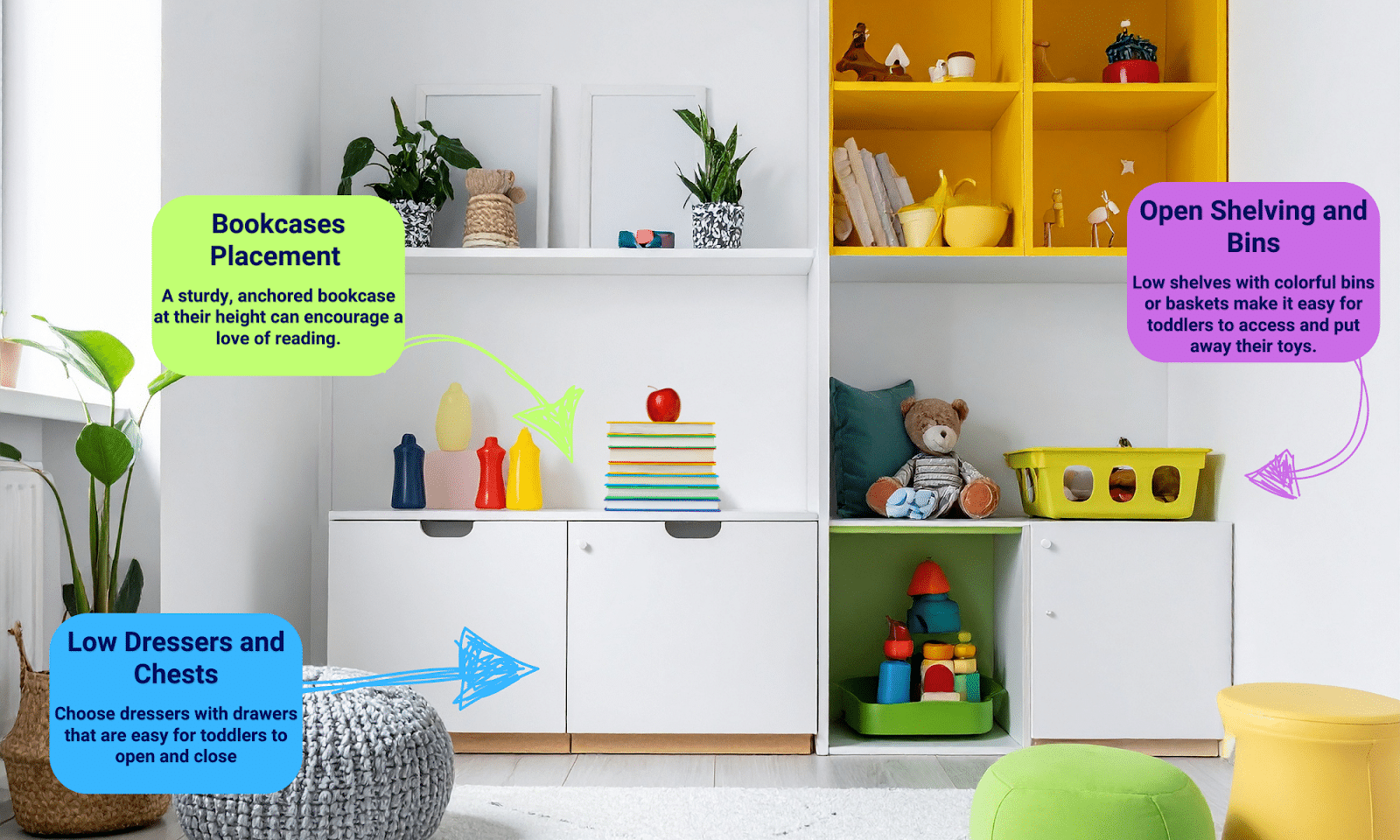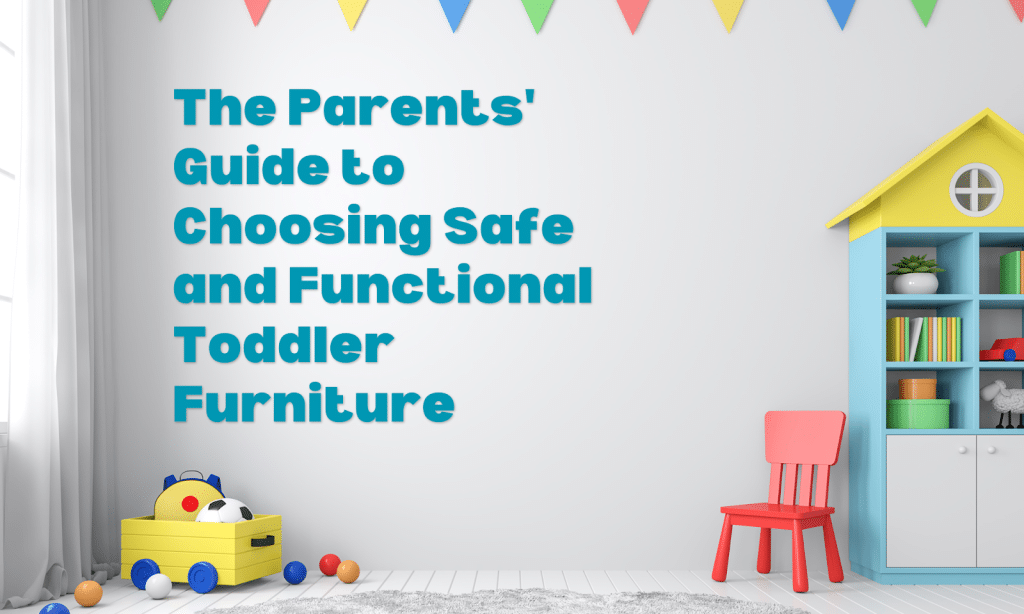As your little one transitions from baby to toddler, their needs evolve, and so does the furniture required to support their growing independence and ensure their safety. Choosing the right toddler beds and other pieces for their room is a significant step in creating a nurturing and functional environment. This guide will walk you through the essential considerations for selecting furniture that is both safe and practical for your curious and active toddler.
Prioritizing Safety: The Golden Rule of Toddler Furniture
Safety should always be your number one priority when selecting any item for your child’s room. Toddlers are naturally inquisitive and prone to bumps and tumbles, so their environment must be designed to minimize risks.
1. Sturdy Construction and Materials: Look for furniture made from durable, non-toxic materials. Solid wood is often a reliable choice, but engineered wood products can also be safe if they meet safety standards. Always check for certifications like those from the Juvenile Products Manufacturers Association (JPMA) or the Consumer Product Safety Commission (CPSC). These organizations set stringent safety guidelines for children’s furniture. Avoid furniture with loose parts, sharp edges, or potential pinch points.
2. Tip-Over Restraints: Dressers, bookshelves, and even some changing tables can pose a tipping hazard if not properly secured. Always ensure that any tall or heavy furniture comes with anti-tip hardware and that you use it to anchor the piece to the wall. This simple step can prevent serious injuries.
3. Non-Toxic Finishes: Toddlers explore with their mouths, so it’s crucial that any paints, stains, or finishes on their furniture are non-toxic and lead-free. Look for certifications that guarantee the absence of harmful chemicals.
4. Slats and Openings: For cribs that convert to toddler beds or actual toddler beds, check the spacing of slats. They should be no more than 2 3/8 inches apart (about the width of a soda can) to prevent a child’s head from getting stuck.
5. Weight Limits: Pay attention to the weight limits specified by the manufacturer for beds, chairs, and storage units. Exceeding these limits can compromise the safety and integrity of the furniture.
Functionality and Longevity: Investing Wisely
Toddlerhood is a relatively short but incredibly dynamic phase. Choosing furniture that can adapt and grow with your child, or at least serve them well through these active years, is a smart investment.
1. Toddler Beds: Transitioning from Crib to Big Kid Bed: When your child starts climbing out of their crib (usually between 18 months and 3 years old), it’s time for a toddler bed. These beds are lower to the ground, making them easier and safer for your child to get in and out of independently. Many cribs convert into toddler beds by removing one side and adding a guardrail. This can save you money and provide a familiar sleeping environment. If buying a dedicated toddler bed, look for built-in guardrails or the option to add them to prevent nighttime falls.
2. Storage Solutions: Taming the Toy Tsunami: Toddlers accumulate a surprising amount of toys, books, and clothes. Effective storage is essential for keeping their room organized and safe.

- Low Dressers and Chests: Choose dressers with drawers that are easy for toddlers to open and close, but also include safety stops to prevent them from being pulled out completely.
- Open Shelving and Bins: Low shelves with colorful bins or baskets make it easy for toddlers to access and put away their toys. This encourages independence and tidiness.
- Bookcases: A sturdy, anchored bookcase at their height can encourage a love of reading.
3. Play Tables and Chairs: A small table and chairs set provides a dedicated space for drawing, crafting, puzzles, and imaginary play. Look for sets that are sturdy, easy to clean, and appropriately sized for your toddler.
4. Changing Tables vs. Dresser Toppers: While a dedicated changing table is convenient, a dresser with a removable changing pad topper can offer greater longevity. Once your child is out of diapers, you simply remove the topper, and you have a functional dresser for years to come.
Design and Aesthetics: Creating a Welcoming Space
While safety and functionality are paramount, the design and aesthetics of the furniture also play a role in creating a pleasant and stimulating environment for your toddler.
1. Child-Friendly Design: Opt for rounded edges instead of sharp corners. Look for designs that are visually appealing to children, perhaps with playful colors or interesting shapes.
2. Durability and Easy Cleaning: Toddler furniture will endure spills, scribbles, and general wear and tear. Choose surfaces that are easy to wipe clean and finishes that are resistant to scratches.
3. Room Layout and Flow: Consider the size of your toddler’s room and how the furniture will fit. Ensure there’s enough clear floor space for play. Avoid overcrowding the room, which can make it feel smaller and less safe.
4. Theme and Color Scheme: While not strictly necessary, choosing furniture that complements a chosen room theme or color scheme can create a cohesive and inviting space. However, prioritize neutral, versatile pieces that can adapt as your child’s preferences change.
Where to Buy and What to Look For
1. Retailers: Reputable baby and children’s furniture stores, both online and brick-and-mortar, are good places to start. They often have knowledgeable staff who can guide you through options and safety features.
2. Secondhand Furniture: While buying secondhand can save money, exercise extreme caution, especially with cribs and beds. Safety standards evolve, and older furniture may not meet current guidelines. Always check for recalls and ensure all hardware is present and functional. If you do buy secondhand, thoroughly clean and sanitize the pieces.
3. Assembly: Many pieces of toddler furniture require assembly. Follow the manufacturer’s instructions precisely to ensure the furniture is stable and safe. If you’re not confident in your assembly skills, consider professional assembly services.
The Takeaway
Choosing furniture for your toddler’s room is an exciting part of watching them grow. By prioritizing safety certifications, sturdy construction, functional design, and thoughtful aesthetics, you can create a beautiful, safe, and stimulating environment that will support your child’s development for years to come. Remember, the goal is to create a space where your toddler can play, learn, and rest securely and happily.
